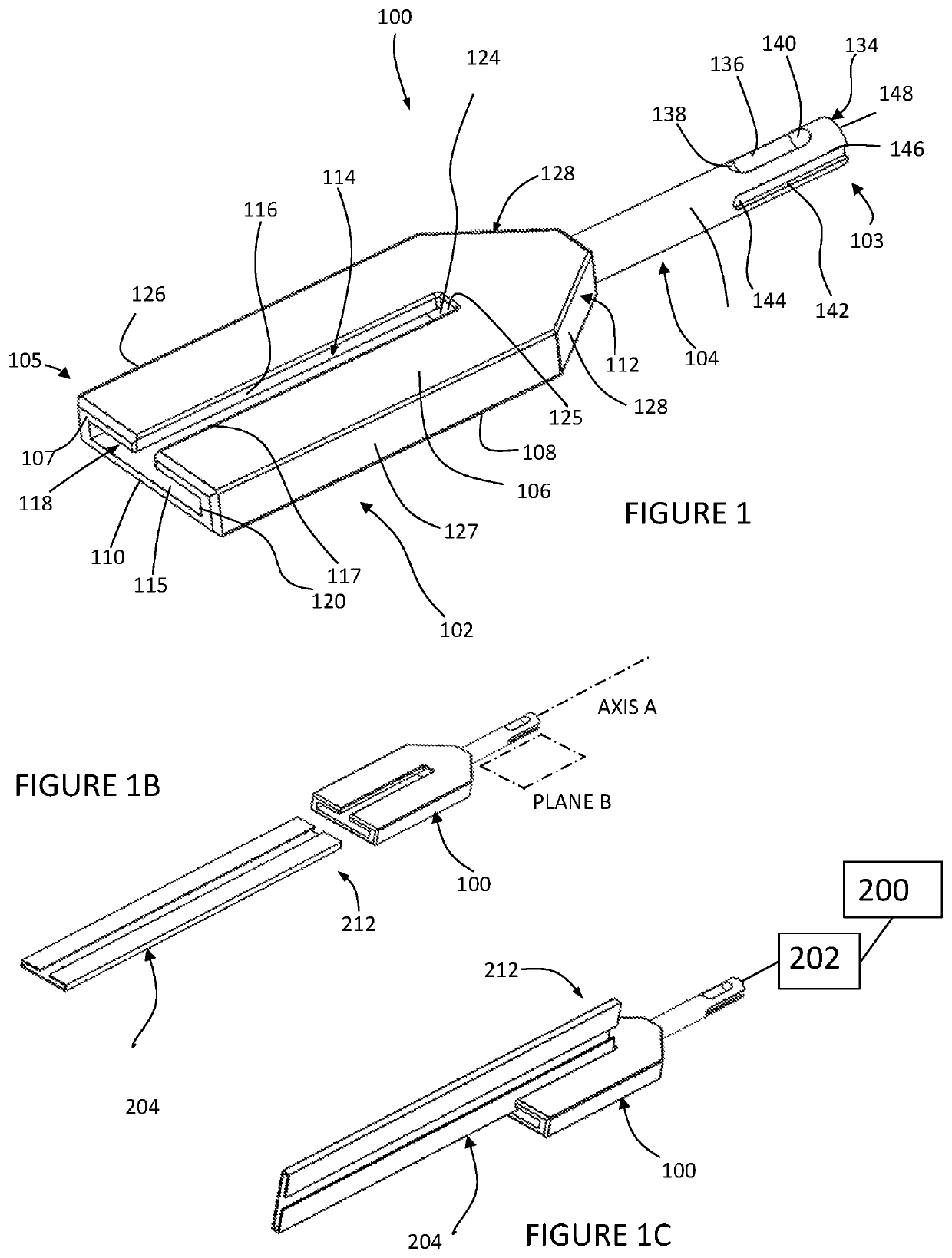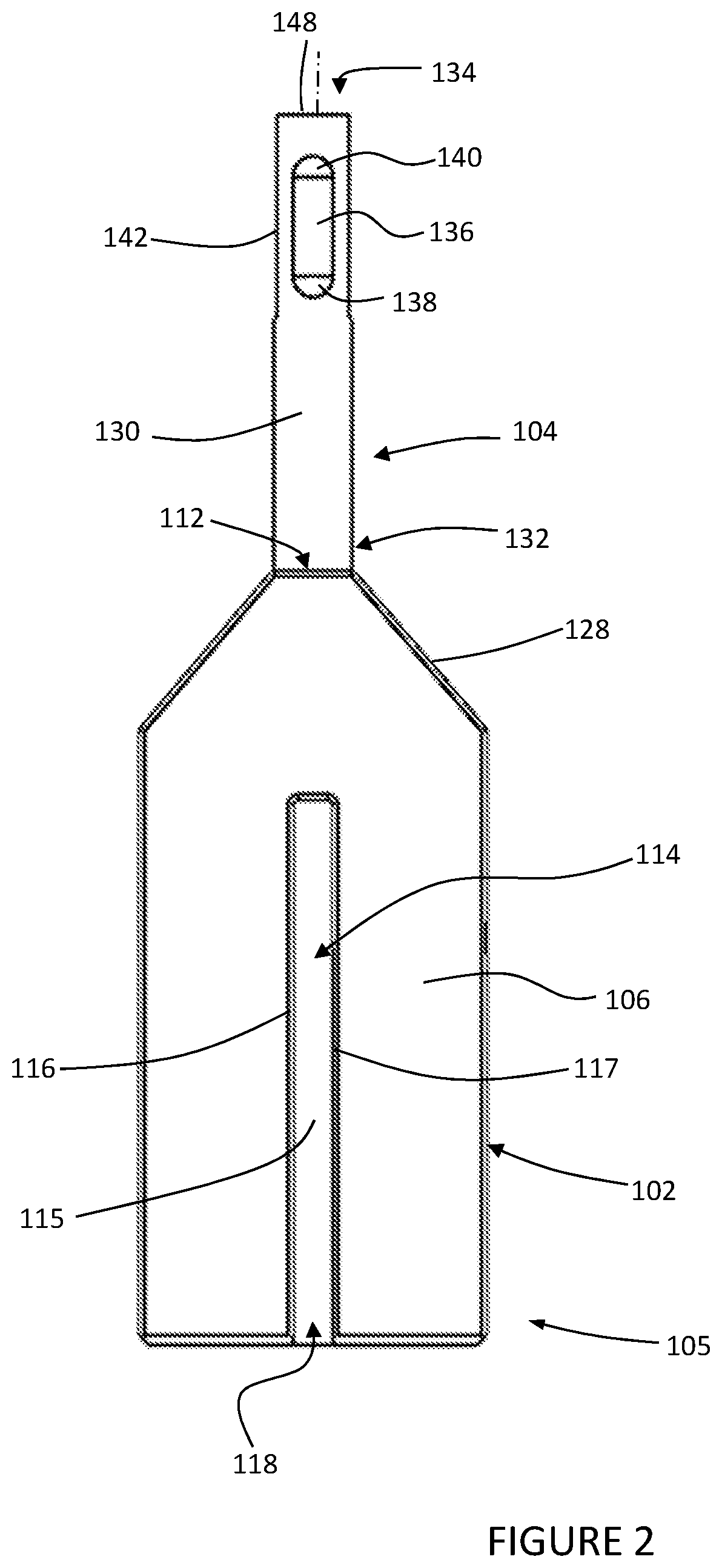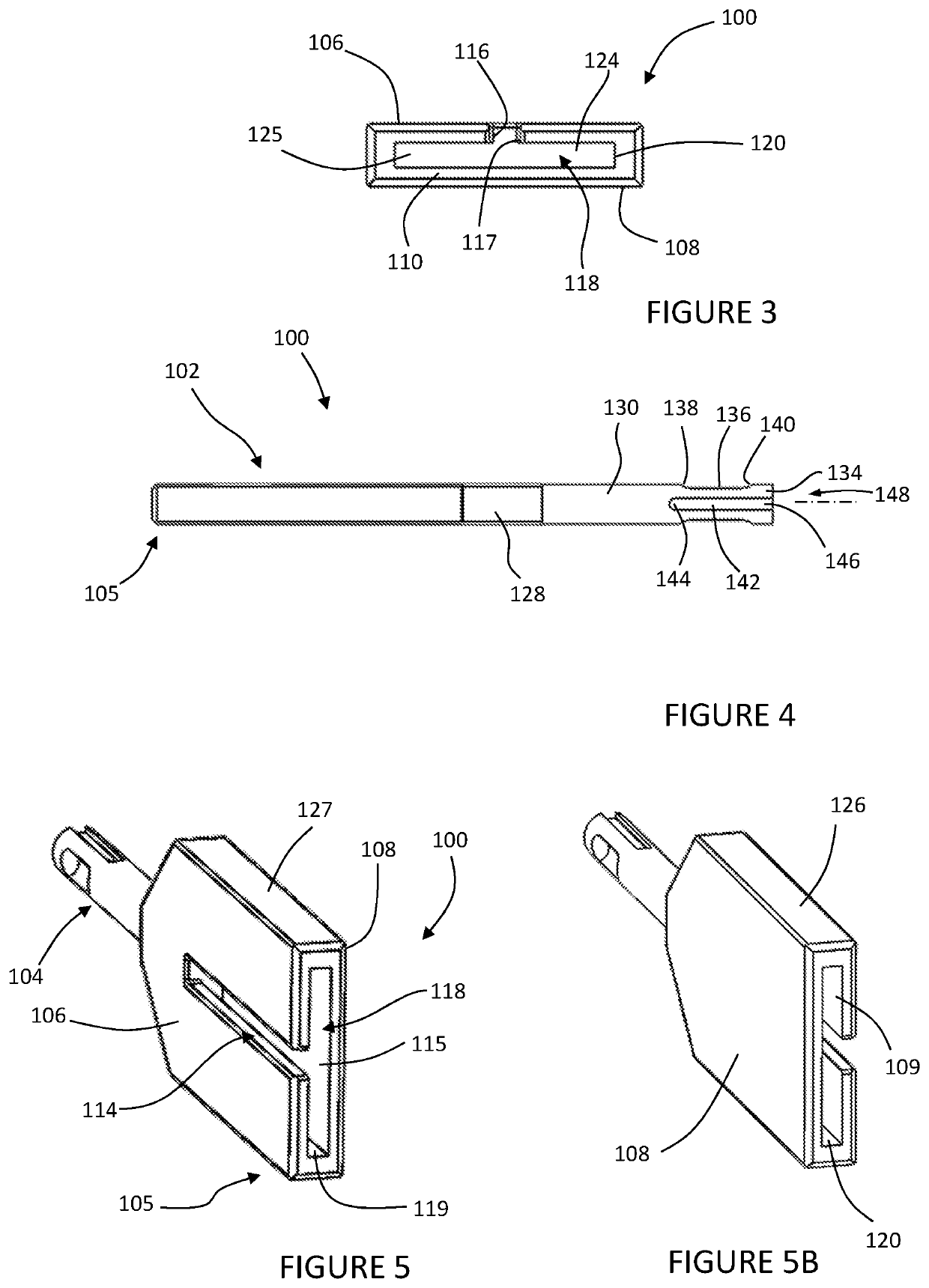Hammer drill adaptors and methods of use
a technology for adaptors and hammer drills, applied in the field of adaptors for hammer drills, can solve the problems of bent drive cleats and shoulder injuries, and achieve the effects of reducing the risk of injury
- Summary
- Abstract
- Description
- Claims
- Application Information
AI Technical Summary
Benefits of technology
Problems solved by technology
Method used
Image
Examples
Embodiment Construction
[0111]Select embodiments of the invention will now be described with reference to the Figures, wherein like numerals reflect like elements throughout. Various depicted embodiments having like numerals are distinguished using a letter in addition to the numeral. The terminology used in the description presented herein is not intended to be interpreted in any limited or restrictive way, simply because it is being utilized in conjunction with detailed description of certain specific embodiments of the invention. Furthermore, embodiments of the invention may include several novel features, no single one of which is solely responsible for its desirable attributes or which is essential to practicing the invention described herein.
[0112]In one embodiment (FIGS. 1-7), an adaptor is configured to be releasably fixed to a standard hammer drill at one end and to releasably hold a standard drive cleat at an opposing end. The adaptor enables a user to use a hammer drill, instead of a common hamm...
PUM
 Login to View More
Login to View More Abstract
Description
Claims
Application Information
 Login to View More
Login to View More - R&D
- Intellectual Property
- Life Sciences
- Materials
- Tech Scout
- Unparalleled Data Quality
- Higher Quality Content
- 60% Fewer Hallucinations
Browse by: Latest US Patents, China's latest patents, Technical Efficacy Thesaurus, Application Domain, Technology Topic, Popular Technical Reports.
© 2025 PatSnap. All rights reserved.Legal|Privacy policy|Modern Slavery Act Transparency Statement|Sitemap|About US| Contact US: help@patsnap.com



